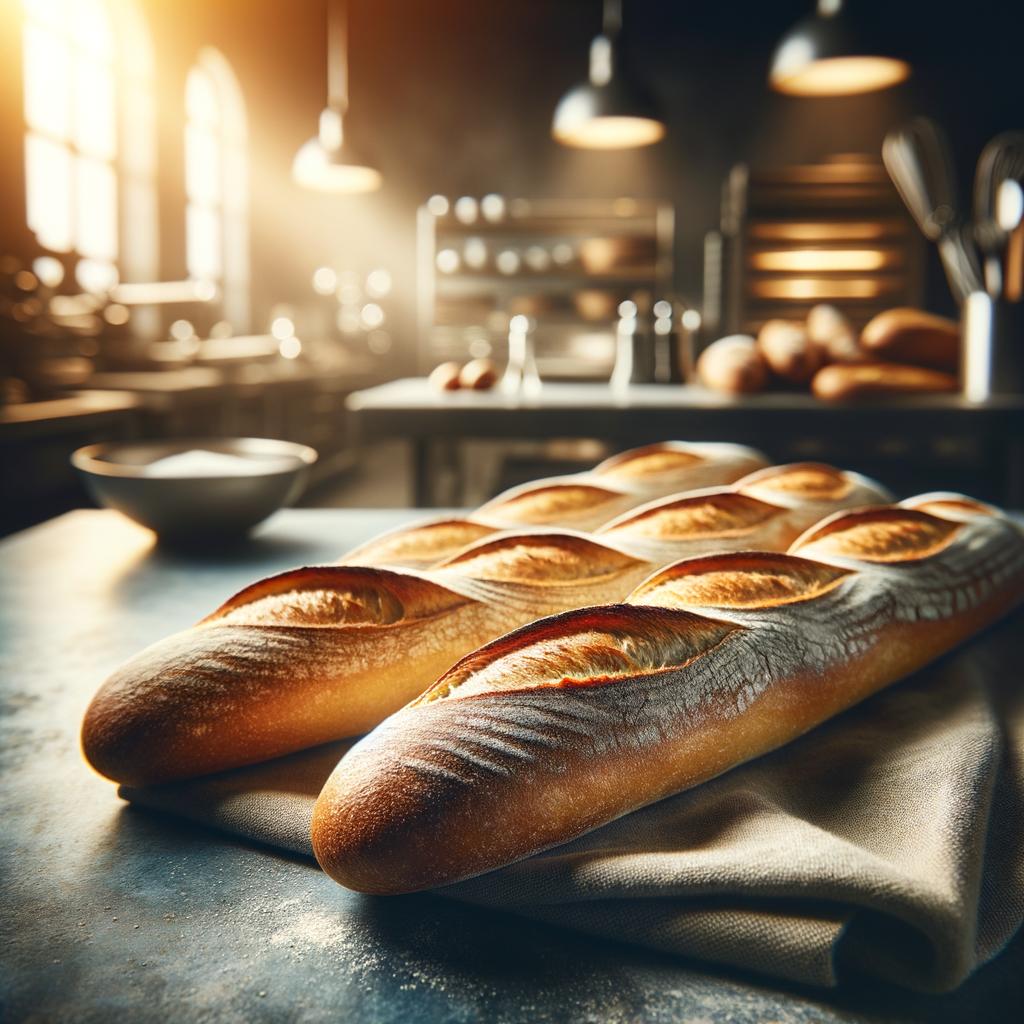Baguettes

Description
The baguette, a long, thin loaf of French bread, is a culinary symbol of France that has captured the hearts of bread lovers worldwide. With its golden crust, dusted lightly with flour, the baguette is a sight to behold. The crust crackles under gentle pressure, revealing a soft, airy interior with a delicate, slightly sweet and yeasty flavor. The baguette is unique for its shape and length, typically about two feet long, and its signature scoring on top, which allows the bread to expand during baking.
Primary Uses
The baguette's versatility makes it a staple in many kitchens. It is commonly used for sandwiches, given its perfect balance of crust and crumb. It's also a popular choice for crostini, bruschetta, and other appetizers. In French cuisine, it is traditionally served with meals, often used to scoop up the last delicious bits of sauce or stew. Beyond the culinary world, the baguette holds cultural significance in France, symbolizing the French way of life. Its image is often associated with the iconic image of French citizens carrying home their daily bread.
History
The baguette's history is steeped in romantic tales and intriguing legislation. While long, thin loaves of bread have been part of French culinary history for centuries, the baguette as we know it today didn't emerge until the 20th century. Legend has it that the baguette's length was designed so that bakers could carry them under their arms. Another story suggests that the shape was mandated by a 1920 law forbidding bakers from working before 4 AM, which didn't leave enough time to prepare traditional round loaves. The baguette's popularity has only grown over time, with the bread becoming a symbol of French culinary prowess and sparking global appreciation.
Nutritional Information
Baguettes, like most bread, are primarily a source of carbohydrates, providing energy for the body. A typical baguette also contains small amounts of protein and minimal fat. The crust's golden color is due to the Maillard reaction, which can produce antioxidants. However, as with all foods, moderation is key. Compared to whole grain bread, baguettes made from white flour have less fiber and fewer nutrients. However, the joy of biting into a fresh, warm baguette, with its perfect crust and soft interior, often outweighs these nutritional considerations. It's a testament to the magic of simple ingredients - flour, water, yeast, and salt - transformed through the art of baking.

